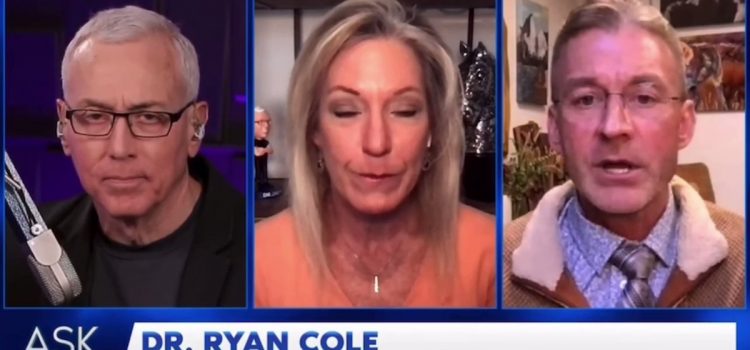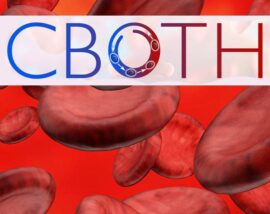
Spezzone di un incontro in cui il dottor Ryan Cole condivide i risultati delle biopsie che potrebbero spiegare l’aumento dei tumori di cui si sente sempre più parlare. Tumori rapidi e molto aggressivi, o riattivazioni di tumori che erano in fase remissiva. Ecco la traduzione del video a cura di Elisabetta Sala.
“Se salti alla diapositiva n° 13, Kyle, ecco di nuovo una domanda a cui bisogna rispondere. Va nella stessa direzione della tua domanda sui mielomi e diversi tumori di tipo linfoide. Questa è di nuovo la diapositiva del dottor… dalla Germania e se vai a quella successiva, ora, tutto quel blu, quelle sono cellule tumorali. Cosa c’è dentro ogni cellula tumorale? Proteina spike. Quindi, ancora una volta, questo pone la domanda. Sì, esattamente. Che cosa? Lo so, ogni linfocita B maligno contiene proteine spike.
E quindi questo pone la domanda. Perché i miei colleghi stanno facendo le stesse macchie [test] su tumori inaspettati e individui giovani, qualsiasi individuo che ha un cancro inaspettato? E Kyle mi ha portato al punto importante:
Mentre viaggio, faccio conferenze e insegno, i dottori di Howler dicono che condivido un paziente da cinque anni, dieci anni in remissione e ora hanno un cancro in quarto stadio. Erano completamente puliti e tutti quei tumori sono tornati e questo va [NON SI SENTE] il meccanismo immunitario tiene sotto controllo il cancro per tutta la vita. Tutti noi abbiamo cellule atipiche ogni giorno e il nostro sistema immunitario va e le elimina.
Ma quello che stiamo scoprendo è che questi tumori sono insoliti, per gruppi di età insoliti e aggressivi. Esistono meccanismi per spiegare perché, ma dovremmo comunque tornare alla domanda del dottor Drew, sono d’accordo con lui al 1000%. Aprite i dati, semplicemente mostrate i dati, dite la verità così potremo fare qualcosa per il paziente e così potremo capire questi meccanismi e prevenire danni. “primum non nocere”, il giuramento che noi tutti abbiamo fatto.
– O aiutare la gente con la scelta, la scelta informata. Questa è la parte che mi sta divorando. Non posso… Il consenso informato è fuori discussione se non si hanno i dati
Questi sono semplici dati di laboratorio. Questo è dare il consenso informato: questi sono i rischi, eccone alcuni che sono ovviamente post iniezione e post covid… Non ho intenzione, sai, di attribuire tutti i rischi all’uno o l’altro, ma vedo anche molti casi dovuti esclusivamente all’iniezione, ma allo stesso tempo il consenso informato… come si fa a dare il consenso informato se non si spiegano tutti quei potenziali danni ai pazienti? Questo non è consenso informato.”
***
Versione originale inglese
“If you jump to slide n° 13, here’s again a question that needs to be answered. This is going to your question of myelomas and different lymphoid-type cancers. This is again Dr…’s slide out of Germany & if you go to the next one now that’s all that blue, those are cancer cells. What’s inside of every cancer cell? Spike protein. So again this begs the question. Yeah exactly. What? I know, every B-cell there that’s malignant has spike protein in it.
And so this begs the question. Why are my colleagues doing the same stains [tests] on unexpected cancers and young individuals, any individual that has an unexpected cancer? And Kyle brought me to the great point:
As I travel and lecture and teach, Howler’s doctors say I share a patient five years, ten years in remission. Their cancer is stage 4 now. They were clear and all those cancers are back and that goes… immune mechanism keep cancer in check for a lifetime. All of us have a few atypical cells every day and our immune system just goes and clears them out
That’s the job of surveillance of our natural killer cells to poke a hole on atypical cells, to blow them up, get rid of them. But what we’re finding is that these unusual cancers, an unusual age groups, and aggressive ones. There are mechanisms to explain why, but we should still go back to Dr Drew’s question, I agree with him 1000%. Open up the data, just show the data, tell the truth so we can do something for the patient & so we can figure out these mechanisms, so we can prevent harm. First do no harm, primum non nocere, the oath we all took.
Or help people … the choice, the Informed choice. That’s the part that’s eating me up. I can’t… Informed consent is off the table if you don’t have the data
These are simple laboratory findings. This is giving informed consent. Here’s some risks, here’s some obviously Post injection and post covid … I’m not going to, you know, … it out the one or the other, but I’m seeing a lot of post injection only as well, But at the same time informed consent how do you give Informed consent if you don’t explain all those potential harms to the patients? This is not informed consent.”
FONTE: Sabino Paciolla


